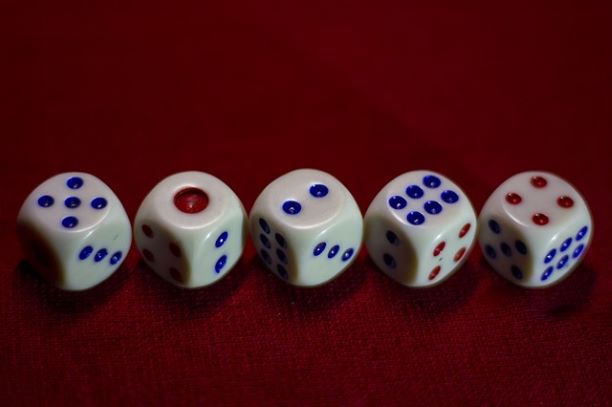Pro & University Programs
Free Probability Courses

Learn Probability for Free and Get Certificates
Probability is the branch of mathematics that describes the possibility of the occurrence of an event. It gives a numerical description of how likely the proposition is true. The probability of occurrence of any event lies between numbers 0 and 1. 0 indicates the probability of impossibility and 1 indicates a sure event. Any number in between will simply indicate near possibility or impossibility. The higher the number, the higher probability of occurrence of an event. A very simple and common example can be the tossing of a fair or unbiased coin. There are two outcomes in a fair coin toss, either heads or tails. Both are equally probable. The probability of occurrence of heads is equal to the probability of occurrence of tails. There are no other possible outcomes while tossing a coin, so the probability of either heads or tails is ½, this can also be indicated as 50% or 0.5.
Probability is expressed in terms of axiomatic mathematical formalization in probability theory. It is applied to a variety of fields such as statistics, mathematics, science, finance, gambling, artificial intelligence, machine learning, computer science, game theory, philosophy and many others. For example to draw inferences about the expected frequency of events. The theory is used to describe mechanics and regularities of complex systems in addition.
Experiment: An experiment is an operation that produces well-defined outcomes, for example, tossing a coin. The outcome is either head or tails. It is well-defined.
Random experiment: Random experiment is when all the possible outcomes are known, but the exact outcome cannot be determined in advance, for example, rolling of a dice. Dice has 6 faces, when rolled, one cannot say what number amongst 1, 2, 3, 4, 5 and 6 may appear on the upper face.
Sample space: Sample space contains all the possible outcomes of an experiment, for example, there are six outcomes when a dice is rolled. All of these six outcomes comprise the sample space. It is indicated by “S”, S = {1, 2, 3, 4, 5, 6}
Outcome: Outcome is defined as the possible result of the sample space S for a random experiment, for example, when a dice is rolled, the upper face can be 2 or when a coin is tossed, the outcome can be heading.
Event: Event is any subset of sample space S. It is denoted by E. An event is said to have occurred when any outcome belonging to the subset E takes place. Contrarily, when the outcome that does it belong to subset E takes place, it is said that the event has not occurred, for example, assume rolling a dice. The sample is S = { 1, 2, 3, 4, 5, 6 }. Suppose E indicates the event of ‘occurrence of a number less than 3’. So the event E = { 1, 2 }. If the number 1 or 2 appears on the face of the dice, then it is said the event E has occurred, but if the outcome is other than 1 or 2, then it is said that the outcome has not occurred since it does not belong to subset E.
Trail: Performing a random experiment is called a trial, for example, tossing a fair coin or rolling an unbiased dice.
The free Probability certificate course offered by Great Learning will help you understand the basic concepts of probability, terminologies, operations, and other related concepts. Probability is one of the basic concepts that is applied across various disciplines of sciences, mathematics, and other disciplines such as finance, gambling, etc. This course will help you understand the concept better and apply it in practical situations to predict the outcome of the processes. You will be given a certificate of completion after clearing the assigned tasks. Enroll today to avail of the course for free. Happy Learning!
Frequently Asked Questions
What is the probability course?
The probability course will cover syllabus on the introduction of the subject, basic terminologies, operations, examples, formulas for different models and working with those models. Enrol in the Great Learning Academy to learn probability courses.
What is the easiest way to learn probability?
Probability is a very easy concept in mathematics although it is applied in various disciplines of science, mathematics, finance and other domains. The easiest way to learn it is with some guidance. We at Great Learning, will help you understand the concept better. So enroll today to learn the probability course for free.
What are the basics of probability?
Basic terminologies, operations, formulas, different models used in probability make the base of probability.
Is probability hard to learn?
No, it is very easy to learn probability. It is dealing with simple formulas and applies simple operations. The output need not be deeply analyzed too.





















